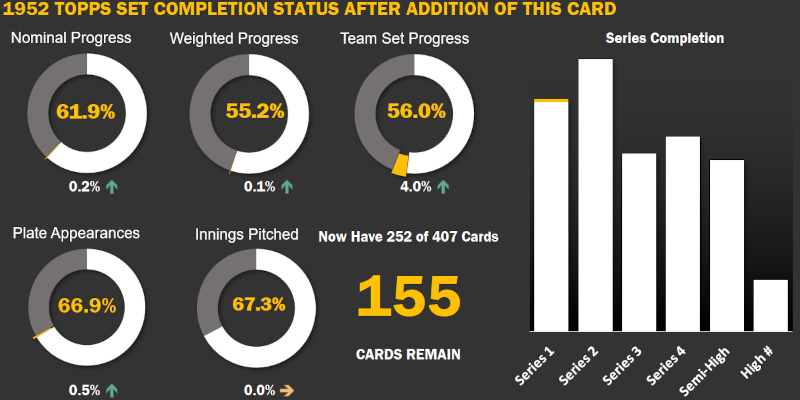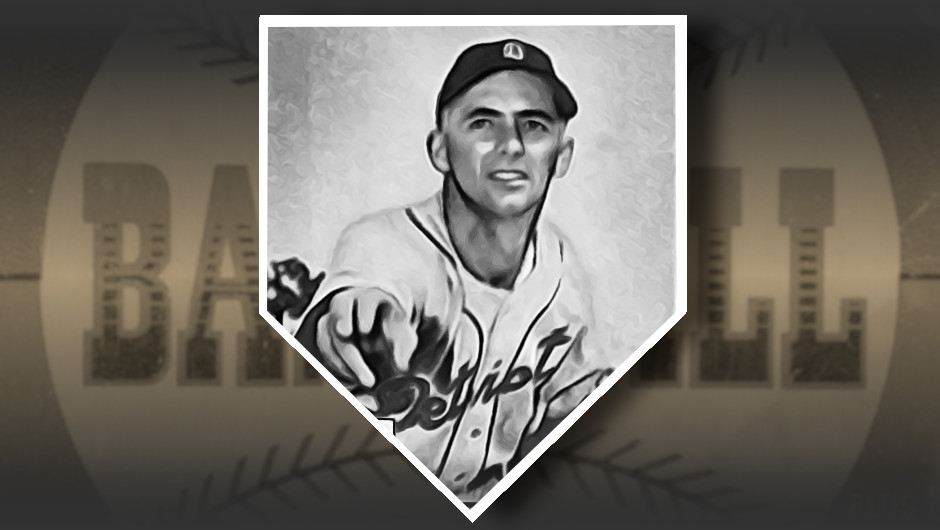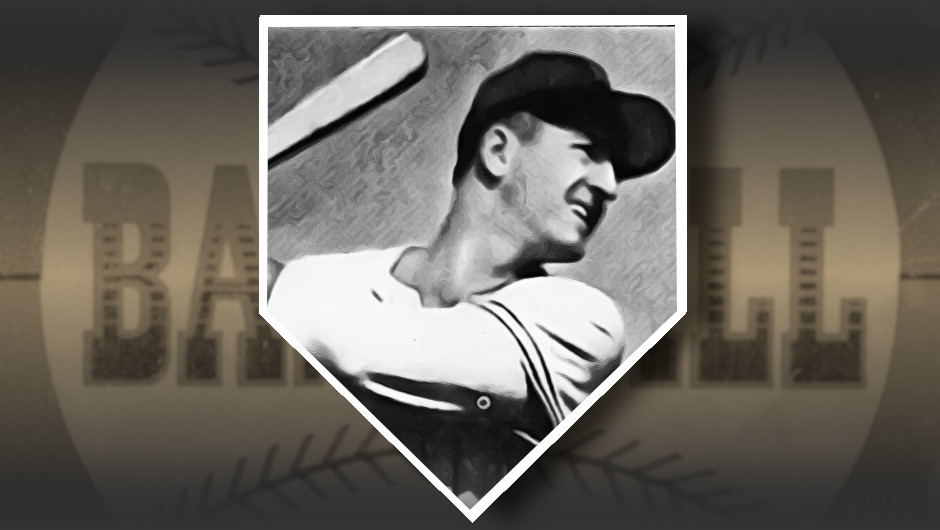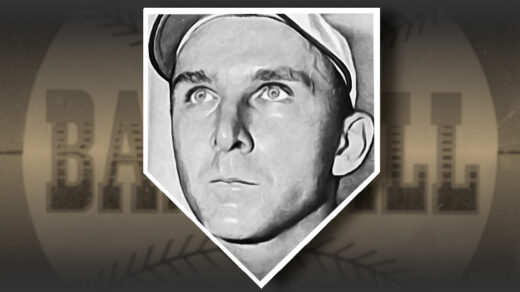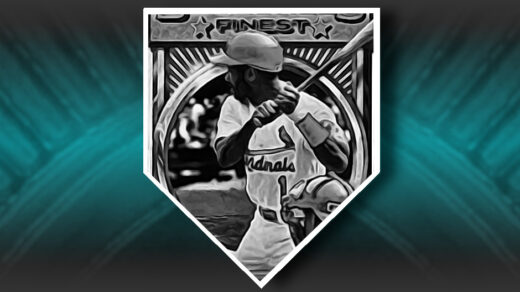Pick any Don Mueller card at random and you will see one of his two poses: 1) Confident slugger watching a double sail deep into the outfield; or 2) A closely cropped portrait of a guy who was just asked a surprise math question.
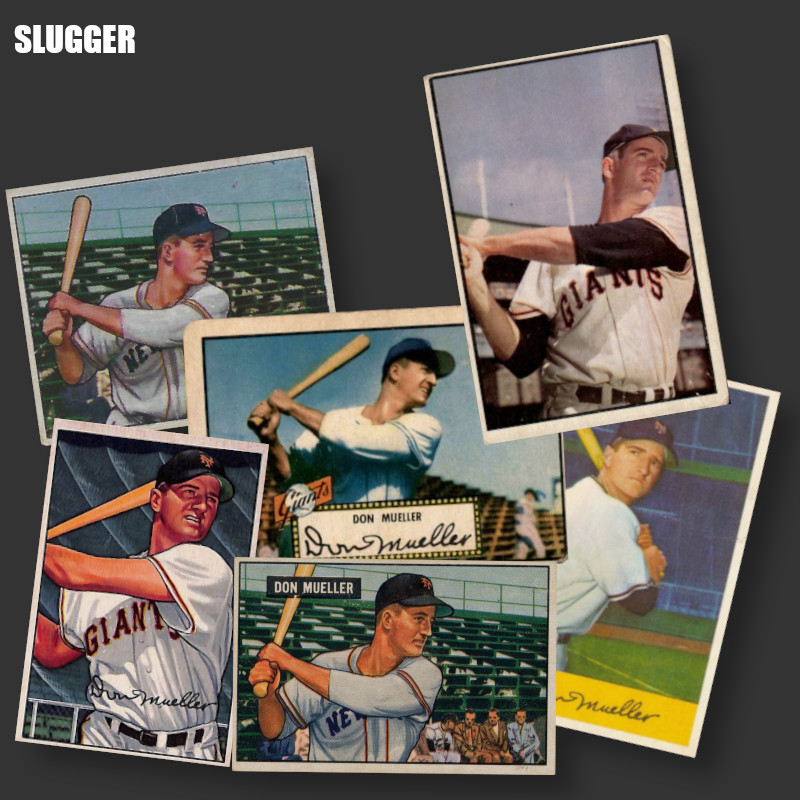
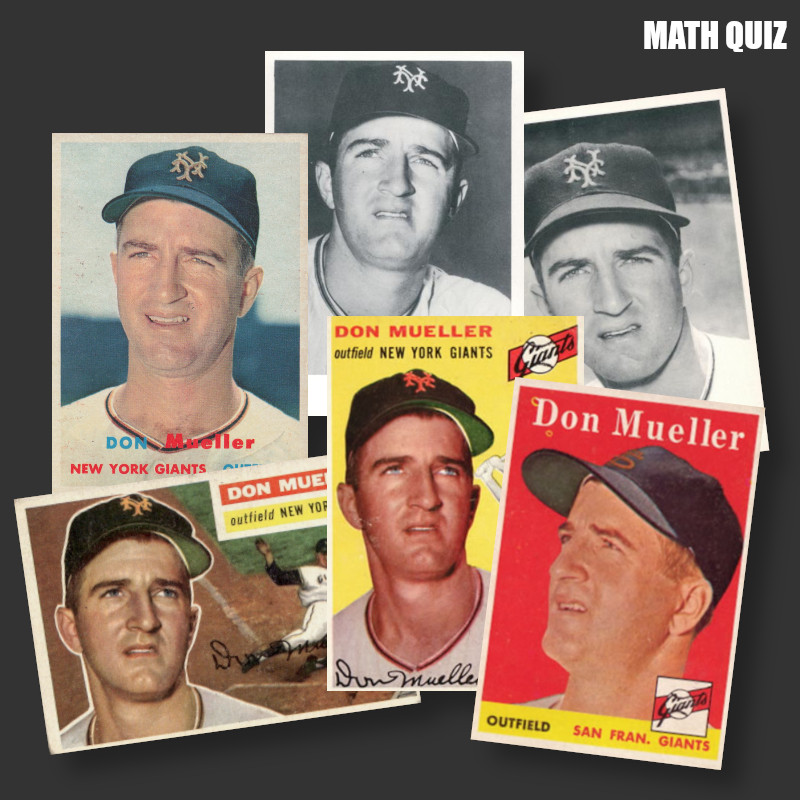
Mueller does indeed look the part of a slugger on the front of his 1952 Topps baseball card. As far as continuing that look via the stats on the back…not so much. He was more of a contact hitter than a power guy, generating a career batting average close to .300 almost entirely through the magical ability to hit singles with four out of every five of his hits.

His power numbers were so faint that Topps thought it proper to call out the aberrant nature of a his walloping 5 home runs in a 2 game span the previous year. Those homers were instrumental in moving the Giants into a year end tie with the Dodgers in 1951, prompting the famous one game playoff that ended with the dramatic “shot heard ’round the world.” And who was the player sliding into third base and injuring his leg just prior to Bobby Thomson winning the game? That would be Mueller after another well-timed hit. Topps simply and nonchalantly calls one of the famous games in baseball lore “the final game of the season.”
Of course, these discussions of extra base potency are just highlighting deviations from the day-to-day experience of watching Mueller at the ballpark. He was primarily a singles hitter who seemed to make contact in almost every trip to the plate. Similar to some of the game’s best contact hitters, he had the uncanny ability to hit a ball in whatever direction he wanted. He barely averaged more than 10 strikeouts per year and only once in his 12 season career did he ever strike out more than two dozen times. His absurdly high contact rate led to him blooping singles into unmanned areas of the outfield and racing chopped balls down the foul lines with some regularity.
A 1955 New York Times report of Mueller signing a contract with the Giants stated Mueller’s primary job with the team wasn’t playing the outfield, but rather convincing manager Leo Durocher that he was really good enough to be a starter on the team. As a team built around power, the Giants typically would start Mueller in a platoon role early in the season and flip to a full time role through the pressure of his steady batting average.
The NYT Durocher comment seems a bit odd considering the previous year Mueller had been named as a starting outfielder at the outset of Spring Training alongside Willie Mays and Monte Irvin. This had been done despite that fact that Mueller was not actually at spring training, but rather holding out for a larger contract following his .333 1953 campaign. He eventually signed after turning down multiple offers and proceeded to have a career season, making the All-Star team, striking out 17 times, hitting .342, and losing the batting crown to Mays in the final game of the season.
Maybe it was his power numbers that made reporters dismiss his box scores. He hit only 4 home runs that year, but in true Mueller fashion 3 were anything but ordinary. One was a grand slam. Another round tripper came in the form of the inside the park variety. In the most unlikely of all, the singles hitter knocked one over the fence to round out hitting for the cycle.
You can forgive the photographer for putting him in the slugger pose.

